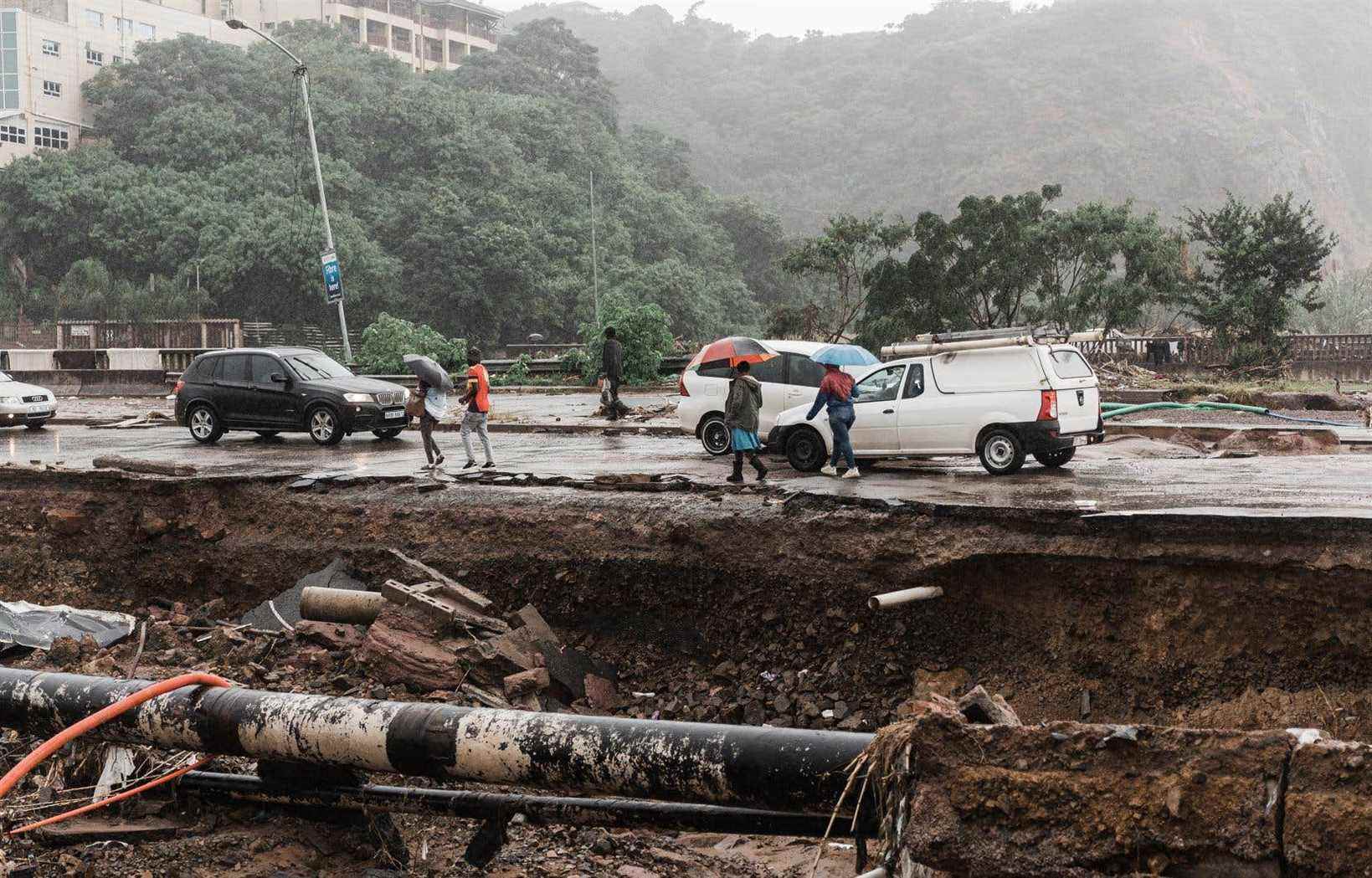President Cyril Ramaphosa declared a state of national disaster in South Africa on Monday, a week after devastating floods that killed at least 443 people in the Durban region on the east coast, affected by severe water shortages and electricity.
“The cabinet met in special session last night and decided to declare a state of national disaster,” said the head of state in a televised address, referring to “a humanitarian disaster”.
“Tonight, we are a united nation in mourning,” added Mr. Ramaphosa who went there on Wednesday.
Some 10,000 soldiers have been deployed to the disaster areas to lend a hand to the overwhelmed relief.
Torrential rains for a week led to deadly floods and landslides. Most of the victims were recorded in the region of the port city of 3.9 million inhabitants in KwaZulu-Natal (KZN), open to the Indian Ocean. Some 48 people are still missing, according to the latest figures.
Precipitation has been calming since the weekend, and no further flooding is expected in the coming days, according to the National Institute of Meteorology. But thousands of people lost everything when their homes collapsed, while entire families were decimated.
Some areas have been without water and electricity since Monday. Tankers are trying to deliver drinking water but roads and bridges are still cut off. Homeless people have undertaken to clear the roads against a few parts claimed from the few motorists.
Nearly 80% of the drinking water network is out of order, according to local authorities who have warned that recovery will take time.
For the first time on Monday, a tanker truck appeared in the neighborhood of Philakahle Khumalo, 30 and mother of two. Far from being enough, she enrages, describing jostling: “people are desperate”.
The army has notably deployed plumbers and electricians. Air support is reinforced to transport goods, and water purification systems as well as tents for the victims will be installed.
Troops supported by helicopters have already been present in recent days alongside the police and rescuers during emergency operations.
The grave has been filled
Rescuers remain on alert, but a week after the disaster began, there is little hope of finding survivors.
Bodies carried away by the floods were found upstream of dams. Families are still looking: “we can’t find the body”, says Clyde Naicker, reached by telephone. He has not seen his brother since Monday.
Funerals are organized, but burials represent a logistical challenge. “We dig the graves and at the time of the burial, the hole filled up with water,” says Nasan Chetty, from the Association of KZN Funeral Directors.
In the morgues, the authorities are trying to speed up the autopsies of the victims in the face of the massive influx of corpses. “There are so many dead people, the morgues can’t keep up,” said Pieter van der Westhuizen, director of the country’s first funeral home.
The children must return to school on Tuesday after the long Easter weekend. But authorities have warned that at least 270,000 students will be deprived of class. Over 600 schools were affected, nearly 4,000 homes destroyed and over 13,500 damaged.
The authorities expect hundreds of millions of euros in damages. An emergency fund of 63 million euros (86 million Canadian dollars) has been released by the government, while the region has already experienced massive destruction in July during an unprecedented wave of riots and looting.
Food vouchers, school uniforms and blankets continue to be distributed. Donations are collected across the country.
Neighboring nations like Madagascar or Mozambique are regularly hit by deadly storms, but South Africa is generally spared these extreme weather events.
